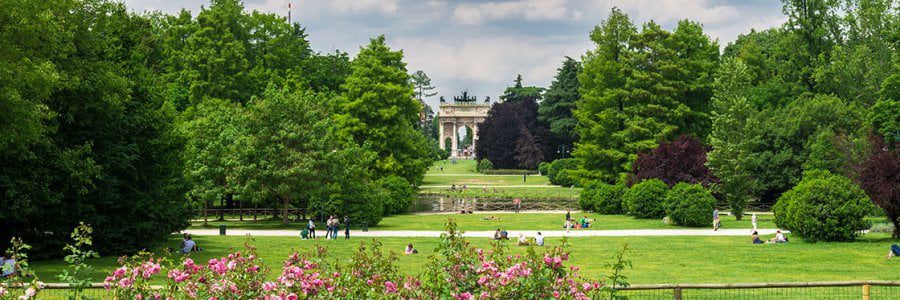When mentioning Milan, the association with the La Scala opera house immediately arises. And this is not accidental because La Scala is a world center of opera singing, where renowned vocalists from different countries enhance their skills. But not only this makes the capital of the Lombardy region famous. Here, annual shows of world fashion take place, and the star football team of the club of the same name is based.
The city is bustling with life as it is a commercial, scientific, and economic center. Its rich historical past is embodied in its streets, squares, and parks. Milan’s history is associated with the names of great personalities, outstanding artists, architects, and fashion designers. Magnificent old palaces and temples neighbor modern buildings, adding unique charm to the city’s appearance. The beauty of the city’s architecture is complemented by Milan’s luxurious parks.
Sempione Park
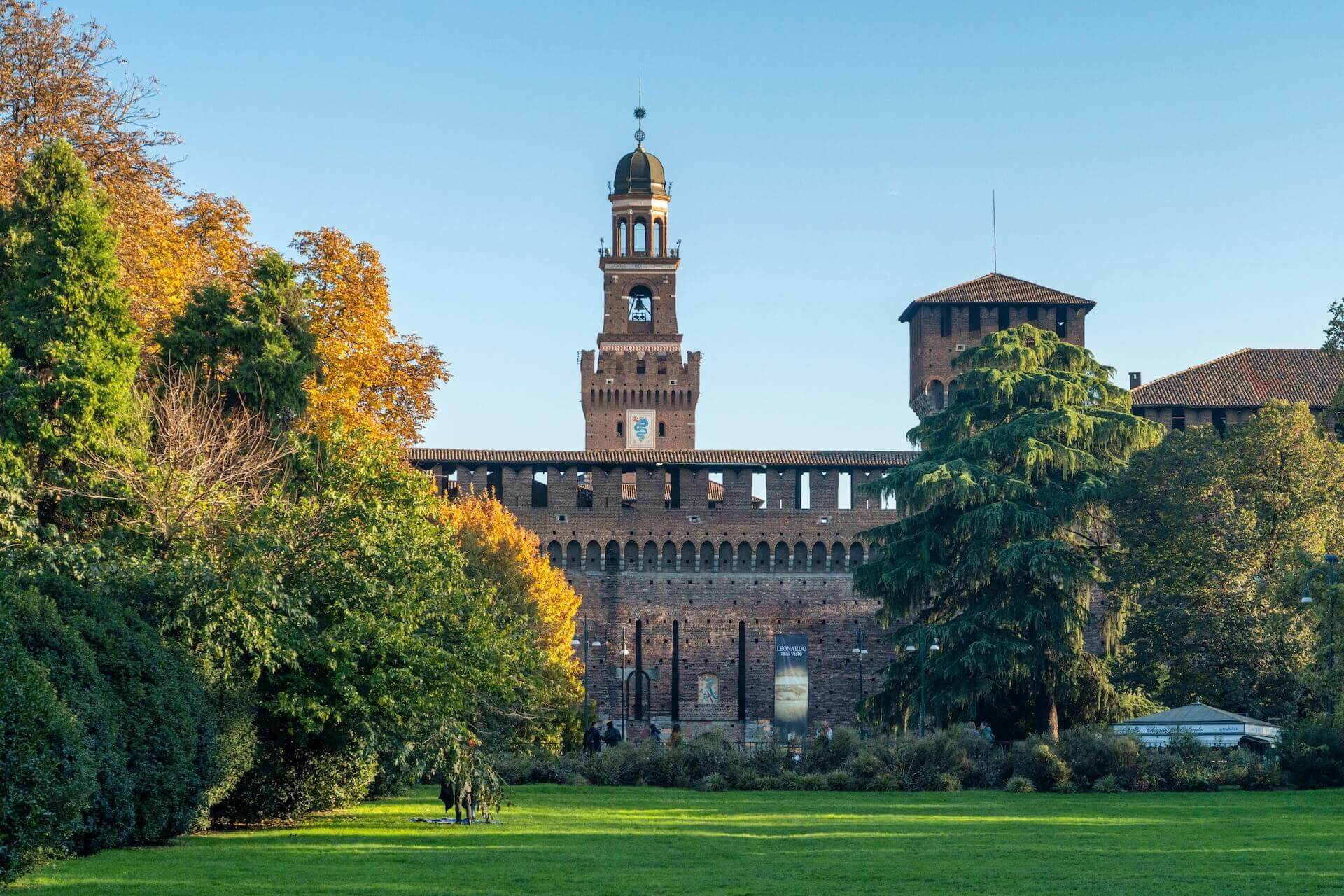
It stretches over 50 hectares next to the Sforza Castle. The talented architect Emilio Alemagna worked on its landscaping project. He transformed the territory of the former military parade ground into a charming landscaped park, loved by Milan residents. During Napoleon’s reign, a triumphal arch was erected on the site of the military bastions in honor of his victories.
After the emperor’s defeat, the arch was completed and named the Arch of Peace. The empty area between the arch and the Sforza Castle was decided to be turned into a park zone. The overall landscaping of the territory features an English style. Beautifully designed alleys, an abundance of decorative shrubs, bright flower beds, and cozy paths create a delightful picture. Beautiful swans, ducks, and turtles inhabit the picturesque lakes and ponds, bringing much joy to visitors.
One cannot help but admire the whimsical fountains and original sculptures here. Sempione has been repeatedly reconstructed, decorated, and updated, complemented by new forms. Here you can relax on velvet lawns and meadows in the shade of tall firs, oaks, and plane trees.
In addition to floral delights, there are architectural landmarks here. The main one is the Palazzo dell’Arte (Palace of Arts), located in the central part of Sempione. It hosts art exhibitions of contemporary art and architecture, concerts, competitions, and creative meetings.
From the observation deck of the Torre Branca tower, you can enjoy a panorama of Milan and its surroundings. The tower is a metal structure 108.6 meters high with an elevator. An undeniable decoration of Sempione is the Arch of Peace.
Lambro Park
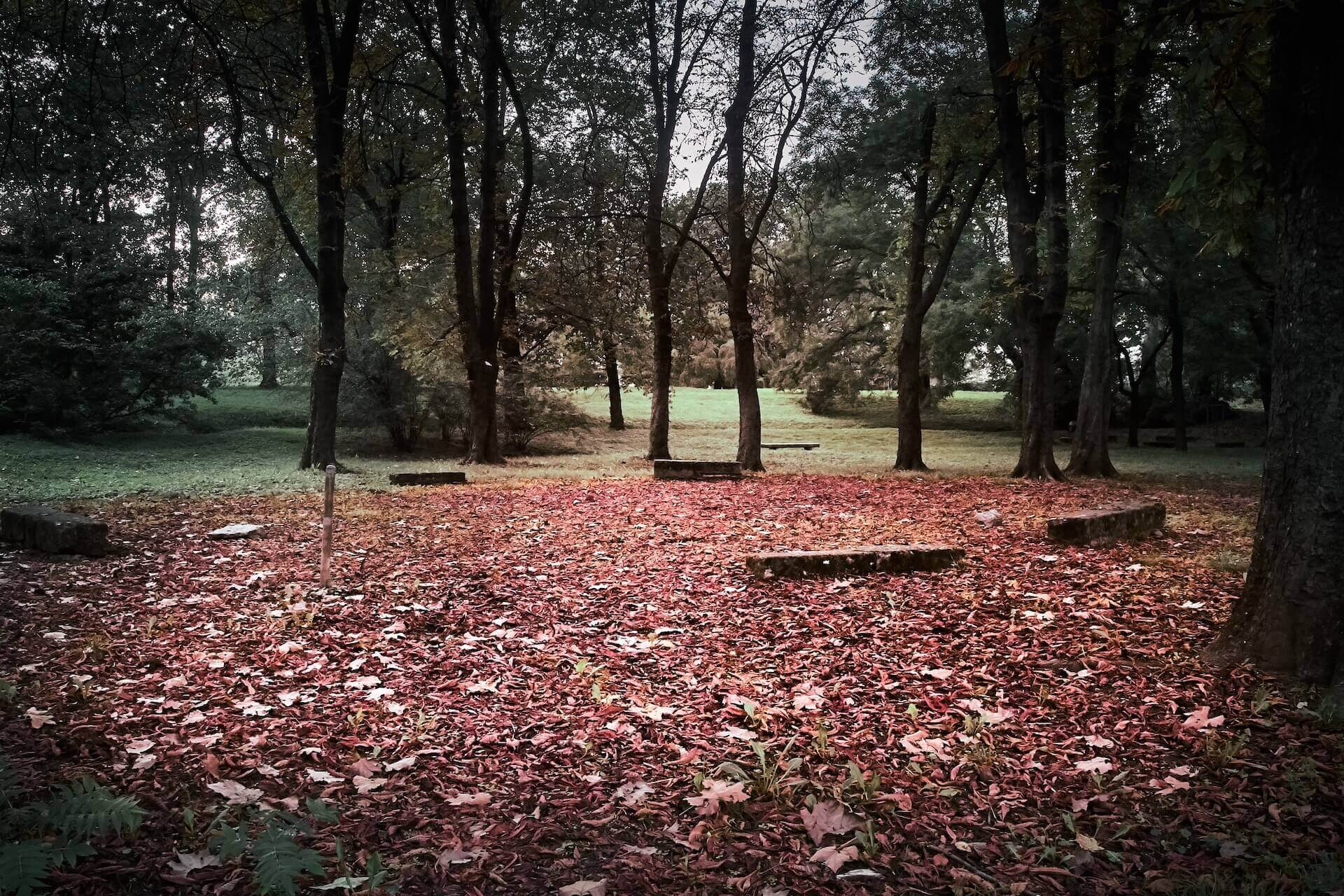
Located northeast of the center, it serves as the green lungs of the city and a magnificent place for citizens to relax. The park area covers 773 thousand square meters.
Landscape architect Enrico Casiraghi, who worked on creating the zone, sought to embody the Lombard landscapes dear to his heart. Typical flora representatives of the region grow here, artificial lakes, streams, and hills are arranged. During the harsh war times, when people were not up to beauty, many trees were cut down for firewood. After the war, this place fell into neglect for decades.
Several years ago, restoration work began here, changing the appearance of this place. Hundreds of young trees were planted, lakes were cleaned, and 4 kilometers of paths were laid. The extraordinarily picturesque territory today is a favorite place for city dwellers to walk. Fresh air, the varied chirping of birds, and the absence of city noise have made Lambro a very popular attraction not only among Milan residents but also among city guests.
City Gardens of Indro Montanelli
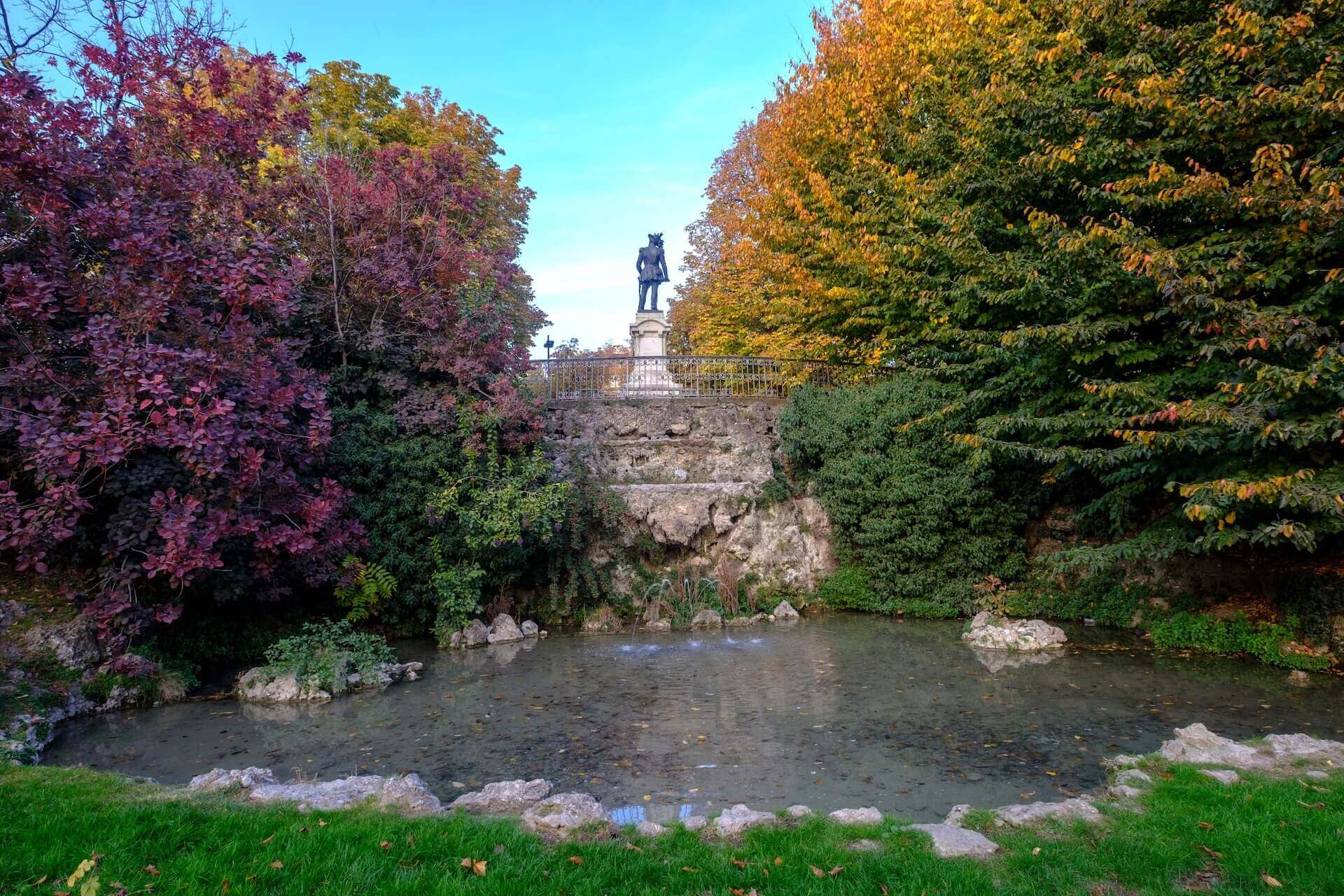
Located in the center of the Lombardy capital. It has borne the name of Indro Montanelli since 2022, but before that, it was called the Gardens of Porta Venezia. They were arranged back in 1748 and are rightfully considered the oldest park area in the city. Tourist reviews of this place are filled with admiration for being here.
Beautiful floral decoration, original landscape solutions, architectural monuments, a peaceful atmosphere, and silence create good conditions for relaxation. The Museum of Natural History and the Ulrico Hoepli Planetarium are located here—objects interesting to visit.
In one of the corners, a statue of the famous Italian journalist Indro Montanelli, historian, and foreign correspondent is installed. He, who interviewed Hitler and Einstein, was the author of 100 books, the last of which he completed in 2001, on the eve of his death.
The Indro Montanelli garden is located between the central train station and the Duomo Cathedral. In the warm season, it is especially beautiful in its green attire. But at other times, it is also enchanting, resembling a fairy-tale forest, mysterious, slightly wild from the lack of greenery, but well-groomed. The abundance of walking paths allows you to calmly bypass all corners of the garden.
There are many benches installed along the paths where you can rest from walking. Picturesque ponds with waterfowl living on them impress. One cannot help but admire the large fountain, with high cascades of jets, rocky islands, and overall stunning landscape design. Much is stylized as antiquity, adding special charm.
For children, playgrounds are arranged, and there is a fenced area for walking dogs. The Montanelli garden always has many visitors, but everyone can find a secluded spot in it.
Brera Botanical Garden
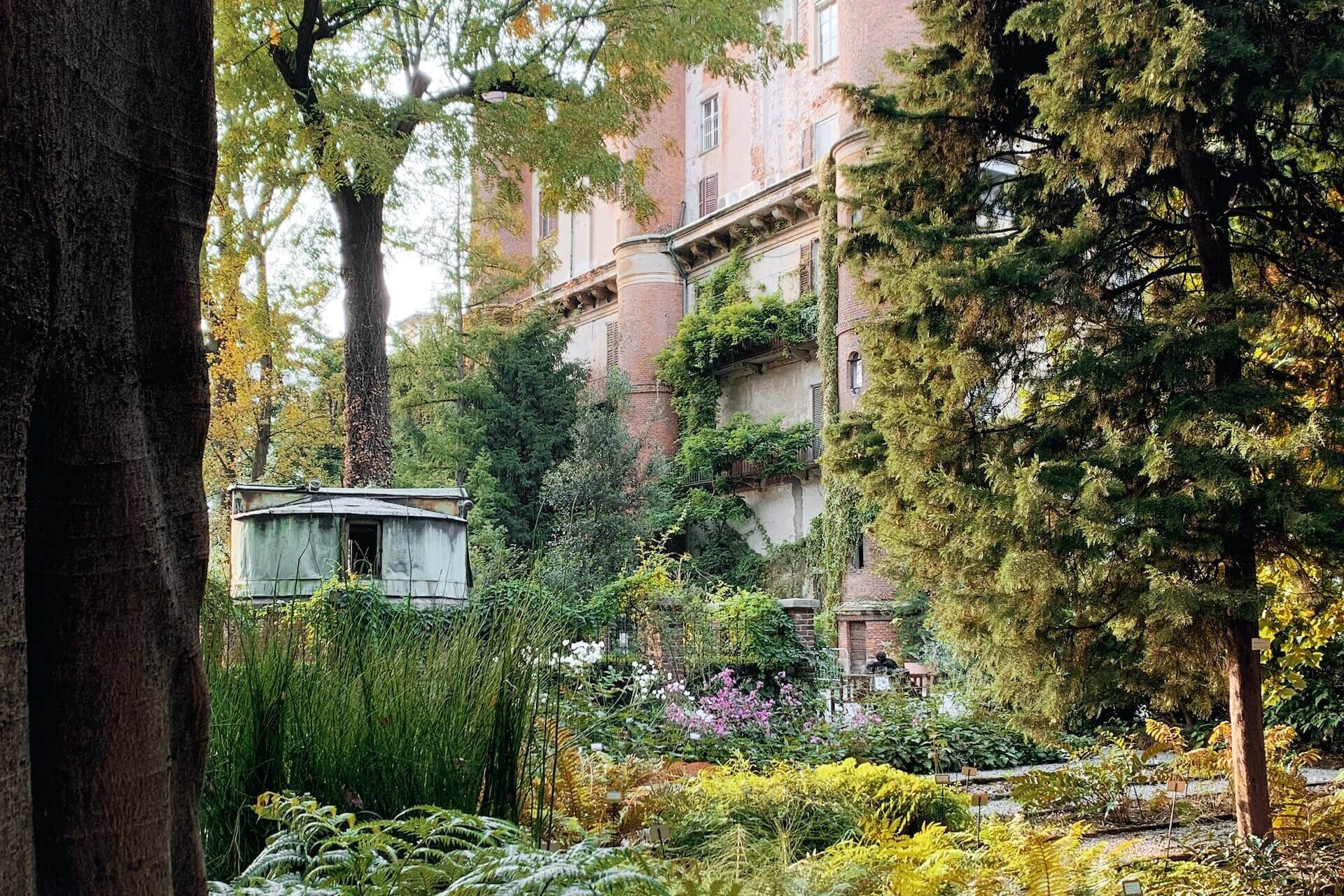
You can enter the Brera Botanical Garden directly from the palace building, which is one of the garden’s objects.
In the 17th century, a Jesuit monastery was located here, which was abolished under the Austrian government. And in 1774, by the decree of Empress Maria Theresa, the Jesuit garden was expanded, laying the foundation for the botanical garden. The garden project was carried out by architect Giuseppe Piermarini.
Florist F. Wittmann worked on the floral decoration. He took the Thtresianum, created in Vienna, as a model. His goal was to grow trees and herbaceous plants used in medicine and pharmacy on the garden plot. According to the fashion of the time, many exotic plants were planted in the garden.
Today, the Brera garden has remained as Piermarini created it. On 5 thousand hectares, rare species of trees are planted here, among which is the oldest ginkgo biloba tree in Europe. Wonderful flower beds enchant the eye with a kaleidoscope of varieties and shades. They are distributed among thematic flower beds: bulbous plants, medicinal herbs, sage flowers, peonies, etc.
Two small pools with intricate designs captivate the eye. Two ancient European foundations are interesting monuments here. You can visit the Astronomical Museum “Brera Botanical Garden.” Tours, seminars, and conferences are organized there.
Walking among the landscape beauties is a great pleasure. Under the sprawling crowns, it is pleasant to rest from the city noise and hustle. Currently, the Brera garden is part of the University of Milan.
Monza Park
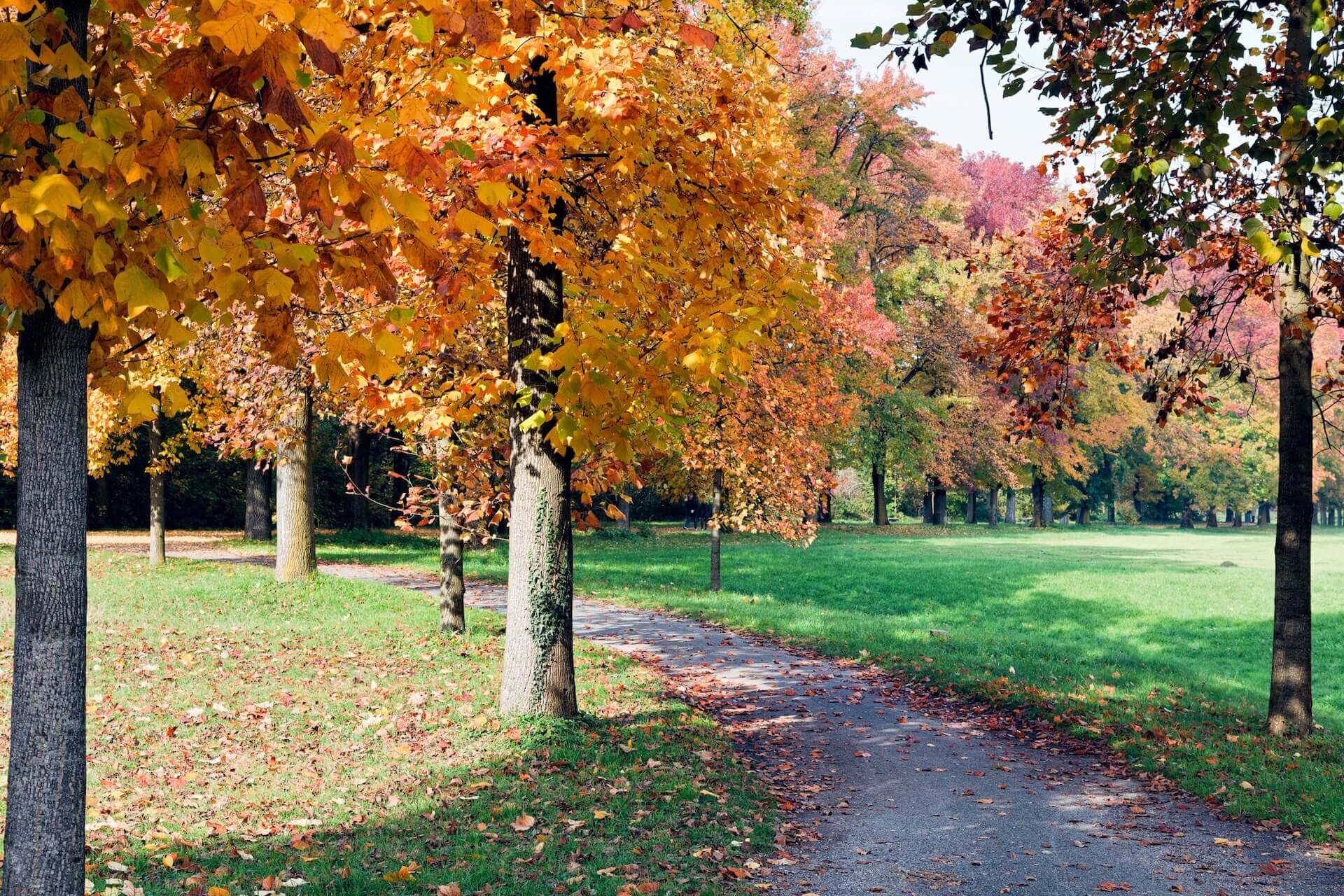
An architectural and landscape space of great historical and cultural significance, the Monza park-fortress is the 4th largest in Europe (688 ha). It was founded by the order of Napoleon’s stepson, Eugène de Beauharnais, as a floral setting around the royal villa of Monza. Landscaping work under the guidance of architects Canonica and Villoresi began in 1806 and was completed in 1808.
As a result, a huge enclosed park with a 14 km fence was formed, inside which were mills, villas, and farmers’ houses. According to Beauharnais’s idea, this territory was supposed to play the role of a hunting reserve during his stay in the estate. During the Austrian rule (1818), the entire space became accessible to the public.
A third of the area is occupied by forests, and the rest of the site is refined with artificial landscapes, lawns, fountains, meadows, and architectural structures. The Lambro River flows in the southern part. Today, Monza is connected to Milan by tram and car routes.
Currently, there is a car racing track that was laid in 1922. To this day, it is considered one of the most prestigious Formula 1 circuits in the world. Not less well-known is the Milano Golf Club, which has hosted 9 major golf tournaments. The city authorities and the public have made considerable efforts to preserve architectural monuments and structures.
Today, there are 3 mills, 12 farmers’ houses, 4 bridges, and 5 gates. Under state protection, visitors enjoy luxurious villas like Mirabello, Mirabellino, etc. Monza is home to 10 thousand rare species of trees, among which are monumental oaks. Magnificent flower beds can be called landscape works of art.
An incredibly beautiful rose garden is located in front of the Villa Reale. The richness of the flora is not inferior to the local fauna: red squirrels, wild rabbits, lizards, ducks, green woodpeckers, and many other birds inhabit Monza.
Northern Park
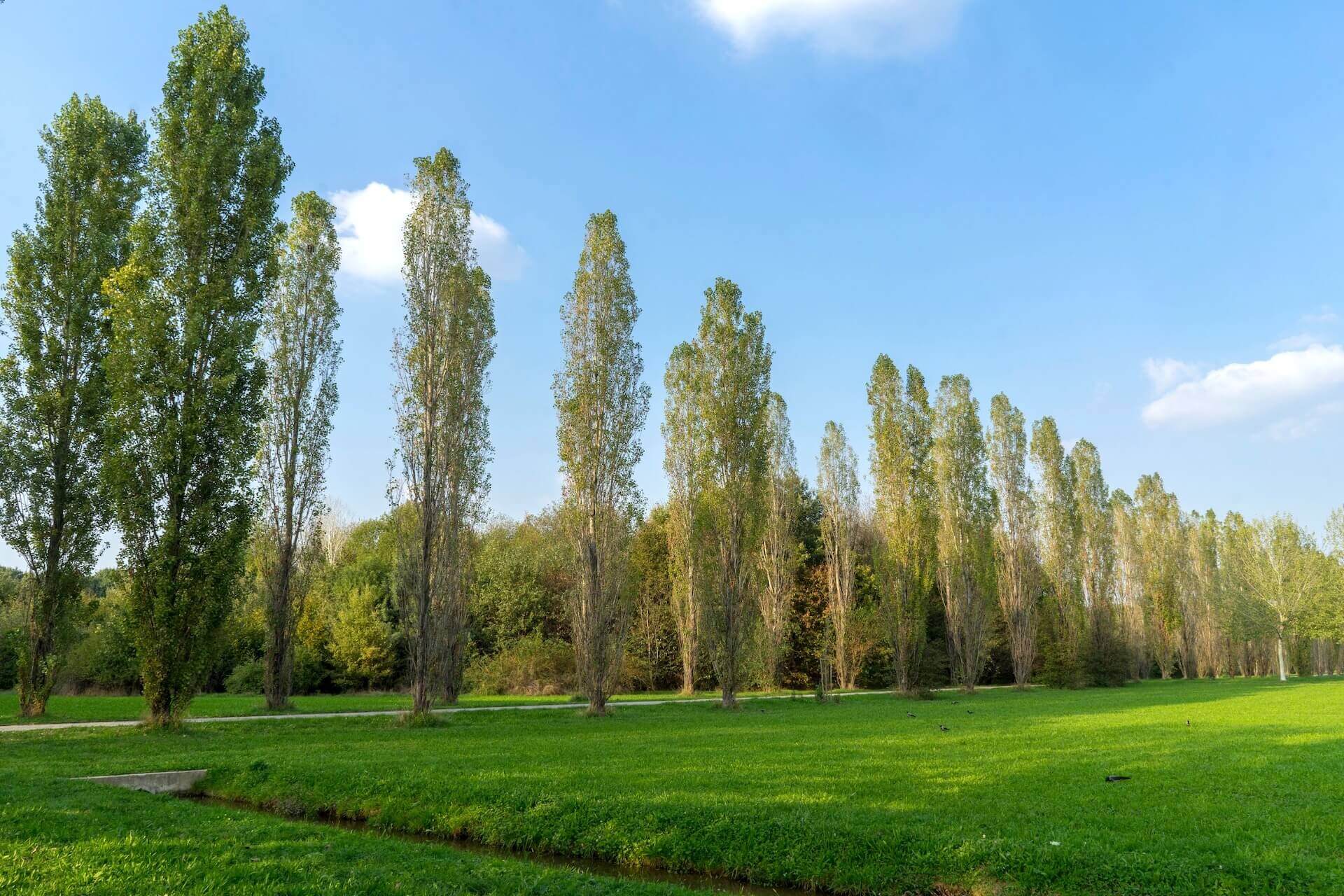
Due to its location, it is called Parco Nord. Here, among the silence and tranquility, you can fully enjoy nature, breathe fresh air, and admire the landscape views. It is easily accessible from the city center by metro M5, getting off at the Biqnami stop.
You can also reach it by S2, S4 trains, or trams. The green lungs of the city have recently appeared on the site of the former industrial zone, to the delight of Milan residents. Several recreation areas with picnic spots, benches, and sports grounds are arranged here. There is plenty of space for cyclists, runners, and pedestrians. In the beautiful alleys, you can walk leisurely, enjoying the landscape views. Everywhere, cleanliness and order prevail.
Many wide paths allow for running races held ceremoniously, with the raising of the Italian flag. Walks by the picturesque lake, shaded by sprawling tree crowns, bring great pleasure. The lake is fenced off with a low metal fence for enhanced safety.
An artificial forest is planted here, so the trees grow in clear rows. You can’t get lost or disoriented in them. Sleek poplars surround cozy lawns where gazebos are built for relaxation. Green hills covered with decorative shrubs add unique charm to the space.
For children, playgrounds are organized, and souvenirs are sold in tent kiosks. There is a cafe and a pub where you can eat well (according to reviews).
Vittoria Park

A cozy, generously green territory located not far from the center of Milan is unofficially considered a park of Italian sailors. It bears the name of the Italian doctor Vittorio Formentano, who saved wounded sailors during the Second World War. Until the mid-20th century, a fruit and vegetable market was located here.
In 1969, a park zone was established here, dedicated to the sailors of Italy. From that time, the Palazzina Liberty palace has been preserved here, where market stalls once stood. Today, the Art Deco-style building is given to poets and is called the “House of Poetry.” Poetry evenings, presentations of poetry collections, and creative meetings are held here.
Although the area is small, it is planned in such a way that every visitor feels free here. It has all the traditional infrastructure designed to make the rest pleasant. The central part is crowned by a large fountain with streams of different heights and a marine theme.
In the summer heat, it is nice to sit on the green lawn near the refreshing coolness of the fountain. Pedestrian and bicycle paths are laid out under rows of large trees. To the delight of children, a playground with carousels is organized. Sports lovers can play basketball on the basketball court. There are separate zones for walking dogs. According to tourist reviews, this is an excellent place for relaxation.
Grugnotorto Park
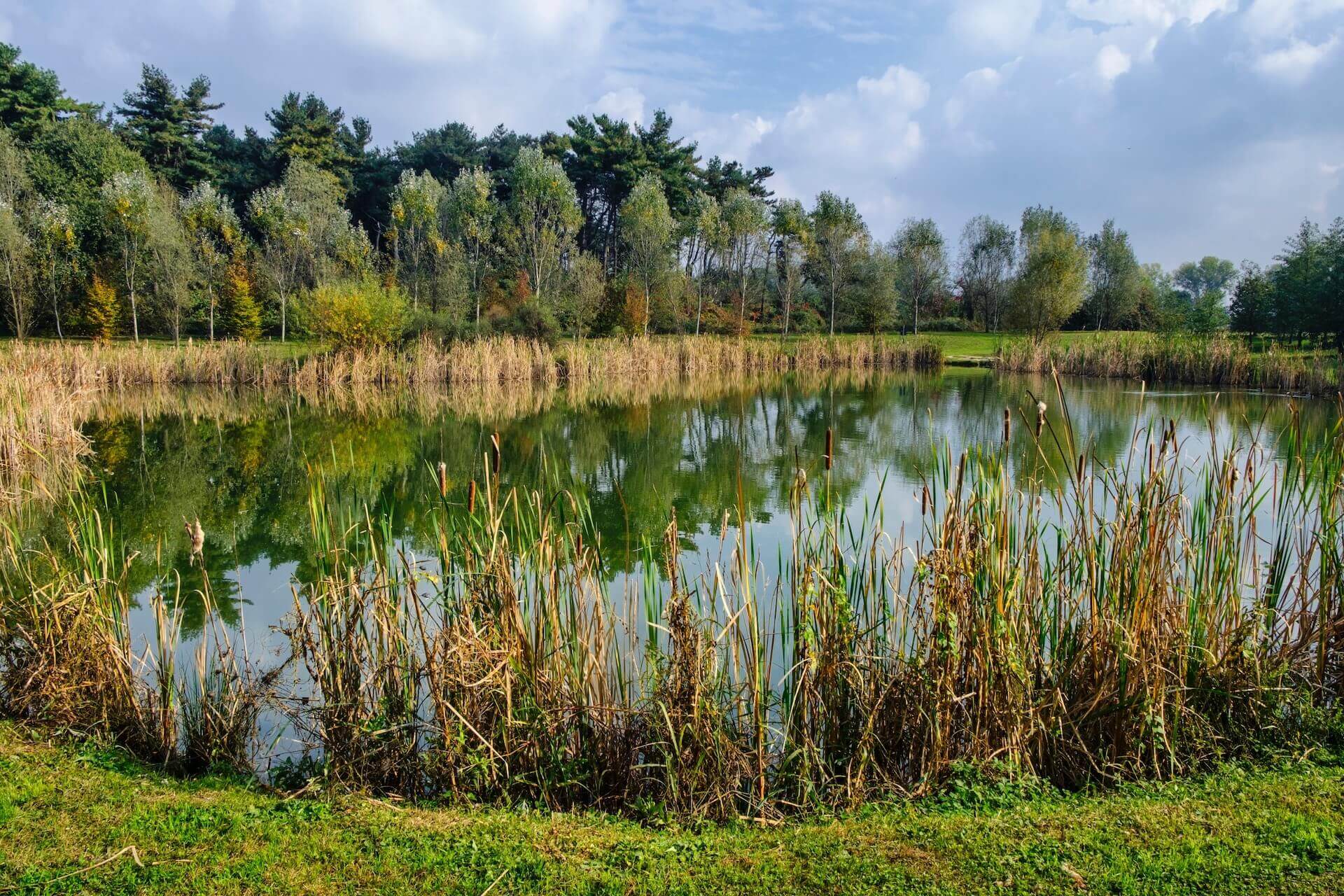
The date of the organization of the new Grugnotorto park space is November 12, 1999. The idea of its appearance was born in the early 80s when the need arose to preserve areas still free from development. The purpose of this idea was to improve the living environment and its ecology in a heavily built-up area.
At first, the park’s epicenter was between the agricultural areas of Varedo, Novo-Milanese, and Paderno-Dugnano, located around the Villoresi canal network. The name Grugnotorto corresponds to the cadastral name given to these regions in the Teresian cadastre (1722).
In translation, it sounds like “big garden.” On November 2, 1999, a memorandum was concluded between 7 regions, which included Cusano Milanino, Boviso, Cinisello Balsamo, and Mugio. The park zone’s strategic location is successful due to the Villoresi canal passing through it and its branches.
Today, it occupies 880 hectares in 7 regions north of Milan. For many years, its preservation has been managed by municipalities and a specially created consortium. Continuous work is underway to restore forests, and bicycle and pedestrian paths are laid out on the territory and along the borders.
Active ecological education is conducted among citizens in alliance with schools and the cultural-ecological association of Grugnotorto park. They strive to improve the landscape and make the presence of various structures, outbuildings, warehouses, and roads less noticeable.
It is worth noting that these efforts are not in vain: young forests, beautiful groves, vineyards, and walking areas make Grugnotorto an environmentally clean zone, “green lungs” of a large territory, where it is good to live. This is an excellent example for other countries to follow.
Monte Stella Park
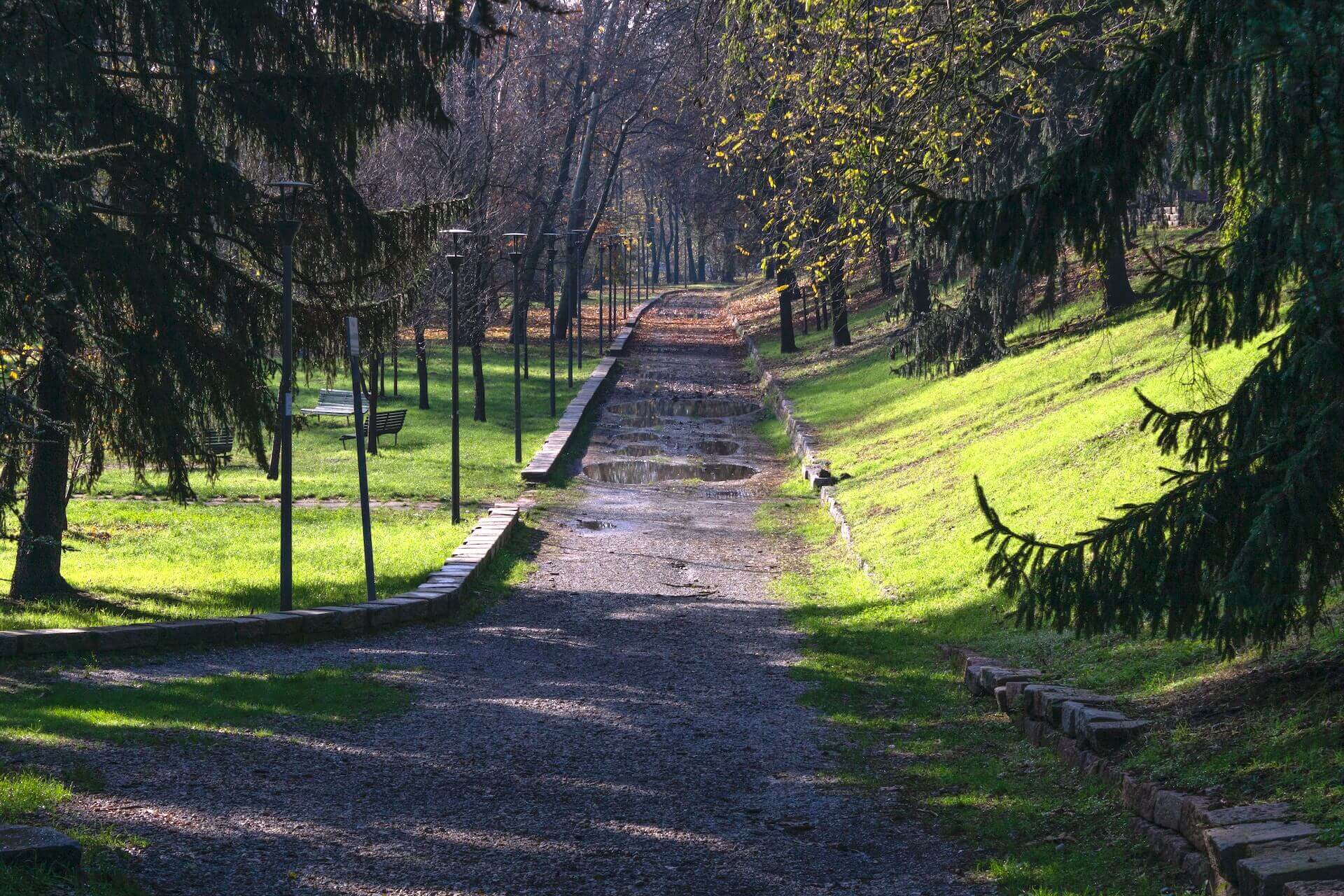
Located in a new post-war designed area of the city, this park island is an example of an innovative approach to its design. Monte Stella is an artificially created hill 45 meters high and the landscape-park space around it.
The author of the unusual project was architect Pietro Bottoni, who dedicated the hill to his wife Stella. The history of its creation dates back to the post-war period when many Milan residents’ homes were destroyed by severe bombings. The destroyed houses were demolished, and the construction debris was taken to a suburban wasteland. As a result, a whole mountain of debris was formed, which was eventually beautified. Grass turned green on it, and according to Bottoni’s project, it became the center of the Monte Stella park zone.
In 2003, one part of the Monte Stella space was turned into a Memorial dedicated to fighters against genocide, fascism, and totalitarianism. In their memory, trees were planted here named after Andrei Sakharov, Moshe Bejski, Pietro Kuciukian, and others.
The hill created from fragments of bombed houses serves as a sad reminder of the destructive power of war and symbolizes peace. Monte Stella has become a territory for romantic dates, leisurely walks, health runs, and excursions. Coniferous and deciduous trees, various shrubs, lawns, gravel, and concrete paths delight with their beauty and coziness, and birds’ songs.
Villa Arconati
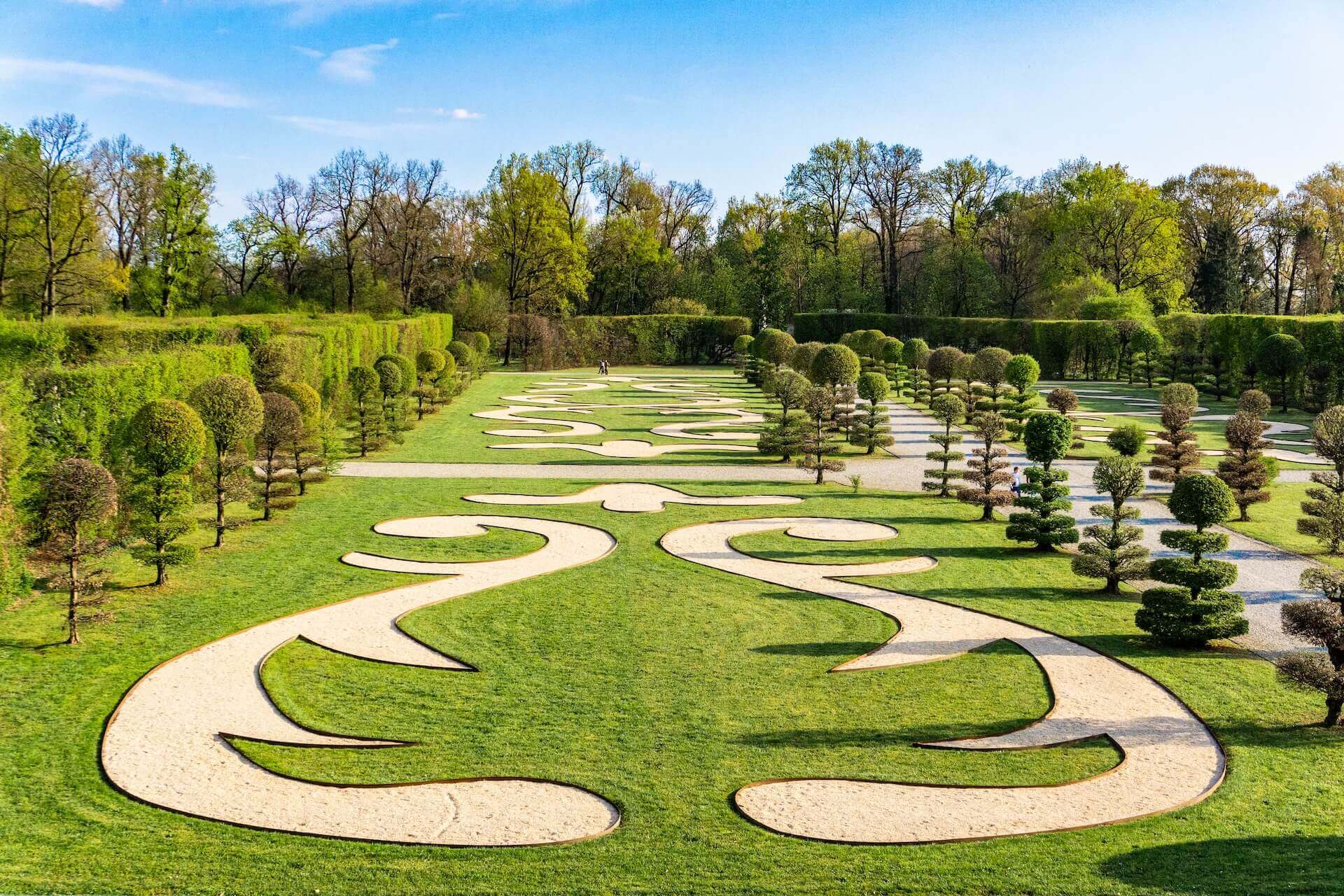
A magnificent monument of Baroque architecture of the 17th-18th centuries, the elegant building of Villa Arconati is located in the Castellazzo district, not far from Milan. Otherwise, it is called Castellazzo degli Arconati: this is the former castle of the same name, completely reconstructed by the new owner.
Galeazzo Arconati, cousin of Cardinal Borromeo, being a great art lover, rebuilt the castle to his taste. He placed a collection of ancient Roman sculptures here. The decoration of the palace continued under Arconati’s heirs: the interiors were painted with frescoes, and the best landscape designers worked on the garden’s territory. The frescoes with mythological character scenes impress the imagination.
Today, Villa Arconati, not inferior in the luxury of decoration to the famous palaces of Europe, is called the “Milanese Versailles.” Today it is a museum open for visits from April 24 to October 23. The luxurious splendor of the palace halls, facades, and stairs is presented to visitors. One can endlessly admire the frescoes, exclusive furniture, and statues.
The garden surrounding the building is also impressive. Shaped constructions of shrubs, stunning flower beds with bright flower patterns, numerous fountains, and expressive sculptures create a stunning picture. Sculptures of Andromeda, Hercules, Pompey, and others are presented here. Hundreds of exotic plants are grown in the greenhouses. A tour of Villa Arconati is an immersion in the world of the Beautiful.
Milan Best Day Trips: Discover Nearby Cities and Attractions

